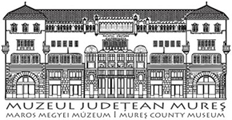Marisia - Maros Megyei Múzeum Évkönyve 29/1. (2009)
Istorie
Istorie 185 UNELE CONSIDERATU PRIVIND EVOLUTIA MUZEOGRAFIEI CU PROFIL DE ISTORIE ÍN BASARABIA INTERBELICÄ ELENA PLO$NITÄ Some consideration on evolution Historymuseography in Bessarabia interwar Abstract The paper presents some considerations on the development of historical museography in Bessarabia in the interwar period (1918-1940). The author defines this period as a new important stage for the bessarabian historical museography, when qualitative changes appeared in museology as well as new specialized museums, among them the Archaeological Museum. We remark that the museum was not only a simple cultural institution, but also an active component of the scientific system of the country(Romania). The museological concepts were integrated in the social practice, the concrete sociocultural needs of the man were satisfied by them. The evolution of the historical museums is examined both analytically and comparatively as against common and specific features of the national museum systems. The paper offers the reader the image of the evolutional process that characterizes the museography in the interwar period. According to the author, the role of historical museum emphasized evince in its remarkable contributions to the development of the society. La sfär§itul secolului al XVIII-lea - Tnceputul secolului al XlX-lea, in cultura europeanä este lansatä §i promovatä ideea muzeului national. Conceptui de muzeu national este legat de constituirea natiunilor burgheze, de lupta lor pentru libertatea nationalä. Anume „institutiile muzeale nationale dau о notä caracteristicä veacului al XlX-lea, remarcändu-se pätrunderea succesivä a curentelor ideologice, a tezelor istoriei referitoare la natiune, popor §i stat national”1. ín a doua jumätate a secolului al XlX-lea, mi§carea pentru crearea muzeelor nationale de istorie s-а intensificat, fiind organizate asemenea institutii in majoritatea capitalelor tärilor europene. Referindu-ne la spatiul dintre Prut §i Nistru, este necesar sä mentionäm cä muzeul de istorie din aceastä regiune romäneascä a parcurs о cale lungä §i anevoioasä pänä Ia definire ca institute nationalä publicä, locul §i rolul lui in societate comportänd diverse etape, evolutia lui afländu-se intr-o stränsä legäturä cu dezvoltarea societätii. Necesitätile societätii basarabene in crearea unui muzeu de istorie pänä la 1918 s-au reflectat prin injghebarea unor nuclee muzeale pe längä societätile cultural-§tiinitifice: Comisia Gubernialä §tiintificä a Arhivelor din Basarabia, Societatea Istorico-Arheologicä Bisericeascä din Basarabia, Societatea pentru Studierea Tinutului Nistrean. Or, Basarabia fiind anexatä Rusiei la 1812, in urma räzboiului ruso-turc din anii 1806-1812, nu a beneficiat in epoca modernä de о institute muzealä nationalä de istorie care ar fi documentat §i prezentat istoria romänilor basarabeni. Anul 1918, anul Unirii Basarabiei cu Románia §i creärii statului unitar román, inscrie un reper de fond pentru institutia muzealä din Basarabia. Anume anul 1918 a pus inceputul unei noi etape in dezvoltarea muzeografiei basarabene ca parte 1 loan Opri§, Istoria muzeelor din Romania, Bucure§ti, Editura Museion, 1994, p. 10.
